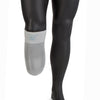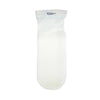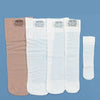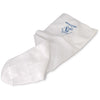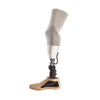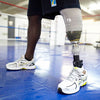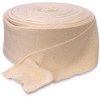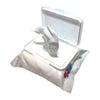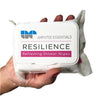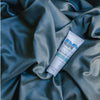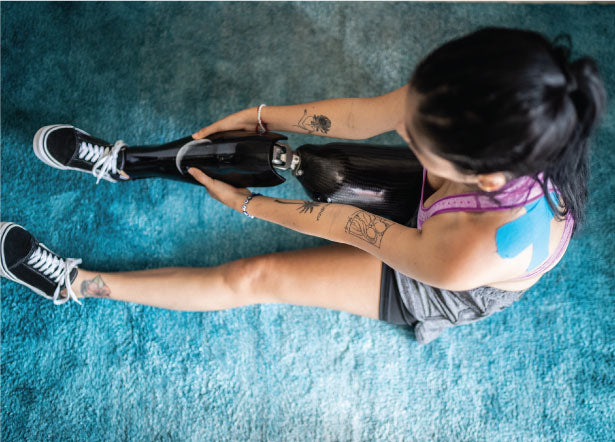Prosthetic Sleeve Material Primer
Neoprene and Latex
Suspension characteristics: Neoprene or latex sleeves use compression, friction and some offer suction to suspend a prosthetic device. BK Sleeves similar to the Syncor Durasleeve provide an airtight seal creating the added benefit of suction suspension. They typically require higher compression than silicone or gel sleeves to function properly.
Sleeve Benefits: Neoprene sleeve suspension is a very efficient and cost effective technique to use as a primary or secondary suspension system. Neoprene and latex Below-Knee suspension sleeves are less fragile than there silicone and gel counterparts.
Good-to-know: If you have skin allergies to latex than most of these sleeves are not appropriate for you, unless made with latex-free neoprene. If you are diabetic or have sensitive skin than a copolymer or mineral oil gel material can offer many skin friendly qualities. Ideal for all activity levels.
Knitted Textile
Suspension characteristics: Sleeves that use any type of knitted textile requires high compression values to suspend a below knee prosthesis.
Sleeve Benefits: Inexpensive solution. Knitted textile prosthetic sleeves are arguably the most durable material due to their reduced reliance on atmospheric pressure for suspension.
Good-to-Know: If you have any upper extremity issues, such as shoulder or hand dexterity involvement than the majority of these sleeves may be difficult to install onto your prosthesis or use on a daily basis. Ideal for low to moderate activity levels.
Silicone Type
Suspension characteristics: Silicone sleeves require less than half the compressive forces than the alternative Neoprene, Latex or Knitted Textile suspension sleeves to suspend a prosthesis. Silicone materials provide a higher coefficient of friction allowing a reduction of compressive forces required. This typically translates to less effort to place your BK sleeve on and off and less compression around your thigh.
Sleeve Benefits: Silicone offers higher adhesion and stability than other materials. When a silicone BK sleeve is able to adhere versus compress your thigh than you can expect less effort necessary to pull your BK sleeve on and off. Silicone formulas have greatly improved over the years and nowadays this material allows greater freedom of movement especially in knee flexion. Medical grade silicone is more tear resistant than gel, allowing for a thinner profile. A thinner sleeve will reduce knee flexion restriction. Silicone typically has a higher elasticity and is easier to clean and disinfect than other materials including gels.
Good-to-Know: This material is great for those with knee ligament instabilities. Prosthetic silicone works well if your thigh and limb have a lot of soft tissue. This material is able to contain redundant tissue well without rolling back down. If your silicone BK sleeve--or prosthetic liner--does roll down it means the top of the sleeve is too tight, requiring one size larger. Silicone sleeves are recommended for all activity levels. Silicone is typically more expensive than other sleeve materials due to the inherent expense of a silicone formulation and difficulty in manufacturing.
Gel-Type
Suspension characteristics: Suspension sleeves designed with gel offer features such as soft, cushiony and highly elastic. Depending upon the formulation, mineral oil gel and thermoplastic elastomer gel provide nourishment and protection through skin-friendly oils. Amputees that consider themselves low to moderate activity are best suited for this type of material. However, as formulations improve many thermoplastic elastomer gel sleeves can handle higher activity levels.
Sleeve Benefits: Gel's highly elastic nature allows these BK sleeves to conform better than silicone. Suspension is achieved with less compression than silicone due to its high adherence to skin and socket, making gel sleeves ideal for vacuum systems. It's strongly recommended to use a sleeve saver/gaitor to prevent socket trimelines from prematurely wearing out your gel sleeve. The list of benefits continues with moisturizing and conditioning the skin to protection against shear forces. The only drawback of gel is durability, most gel formulations are not as durable as silicone, however that is slowly changing.
Good-to-Know: Designed for low to moderate activity levels. However, with formula advancements some gel type Ottobock sleeves are rated for high activity. Physicians recommend mineral oil gel for scar tissue, grafted skin, and sensitive diabetic patients.
Tip: Never store your sleeve in a folded position for an extended period of time. Most materials will develop a permanent wrinkle along the fold line.
Related Prosthetic Sleeve Articles:
- The Complete Prosthetic Suspension Guide
- What is the difference between Vacuum and Suction suspension systems?
- Which prosthetic sleeve features are important to amputees.
- Prosthetic sleeves that offer the longest life.
- Helpful tips for your prosthetic sleeve
- How-to install a Below-Knee Sleeve onto my prosthesis?
- How-to protect and care for suspension sleeves.














































